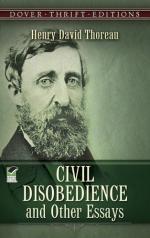|
This section contains 505 words (approx. 2 pages at 400 words per page) |

|
Walking Summary and Analysis
In "Walking" Thoreau explains his love of taking long, aimless walks through natural surroundings, something that he does for several hours a day. He describes his walks as liberating, and invites his readers to join him in declaring themselves citizens of "Nature" with a capital N. Thoreau's independent walking serves as a metaphor for an independent way of thinking and of viewing society.
Thoreau begins his essay with an entreaty to his readers to think of themselves as inhabitants of nature rather than of society. He realizes this is a radical statement, he writes, but asks permission to elaborate.
Thoreau enjoys walking without any practical purpose. While he may have no specific destination in mind when he sets out walking, however, his walking is not without meaning. He says that like a camel, a proper walker should "ruminate" as he walks...
(read more from the Walking Summary)
|
This section contains 505 words (approx. 2 pages at 400 words per page) |

|




